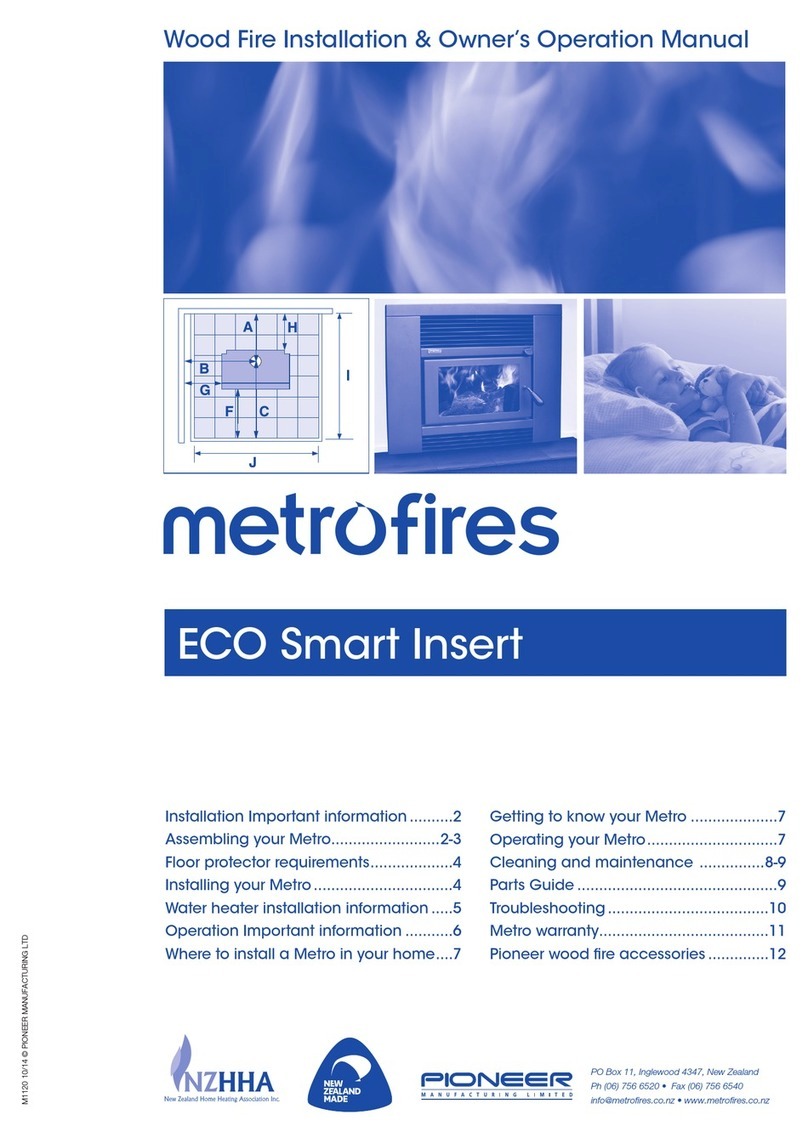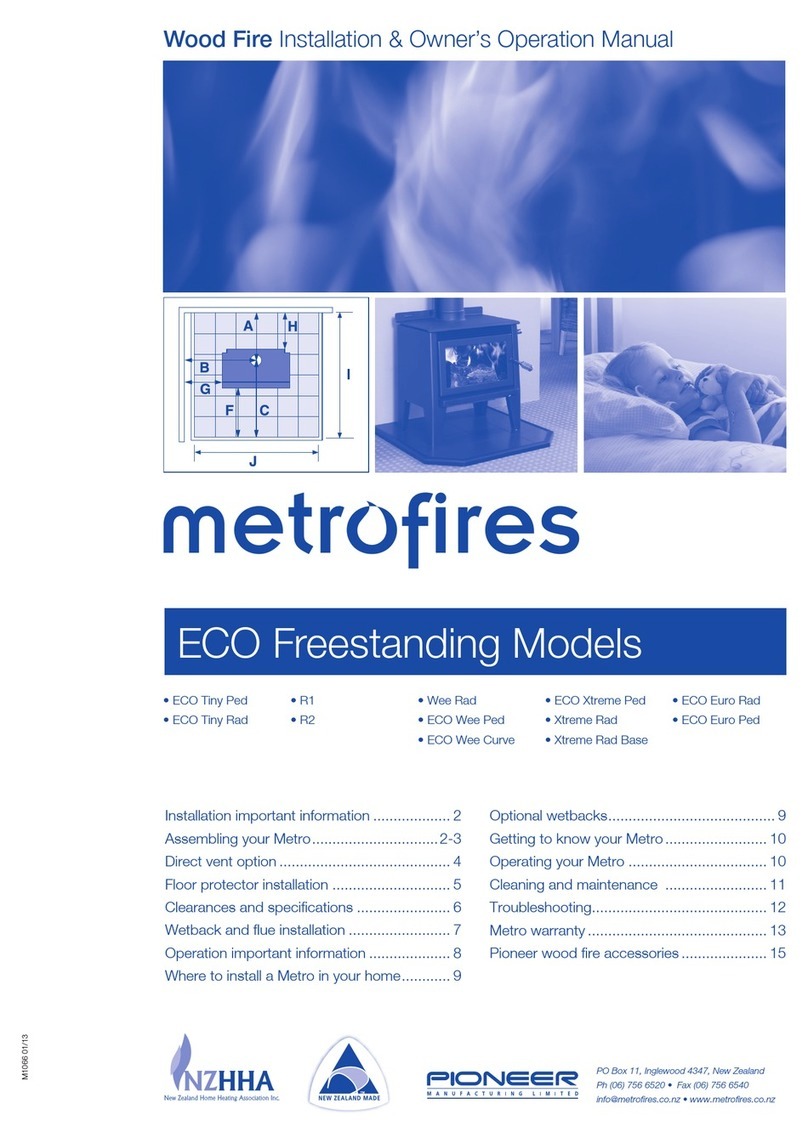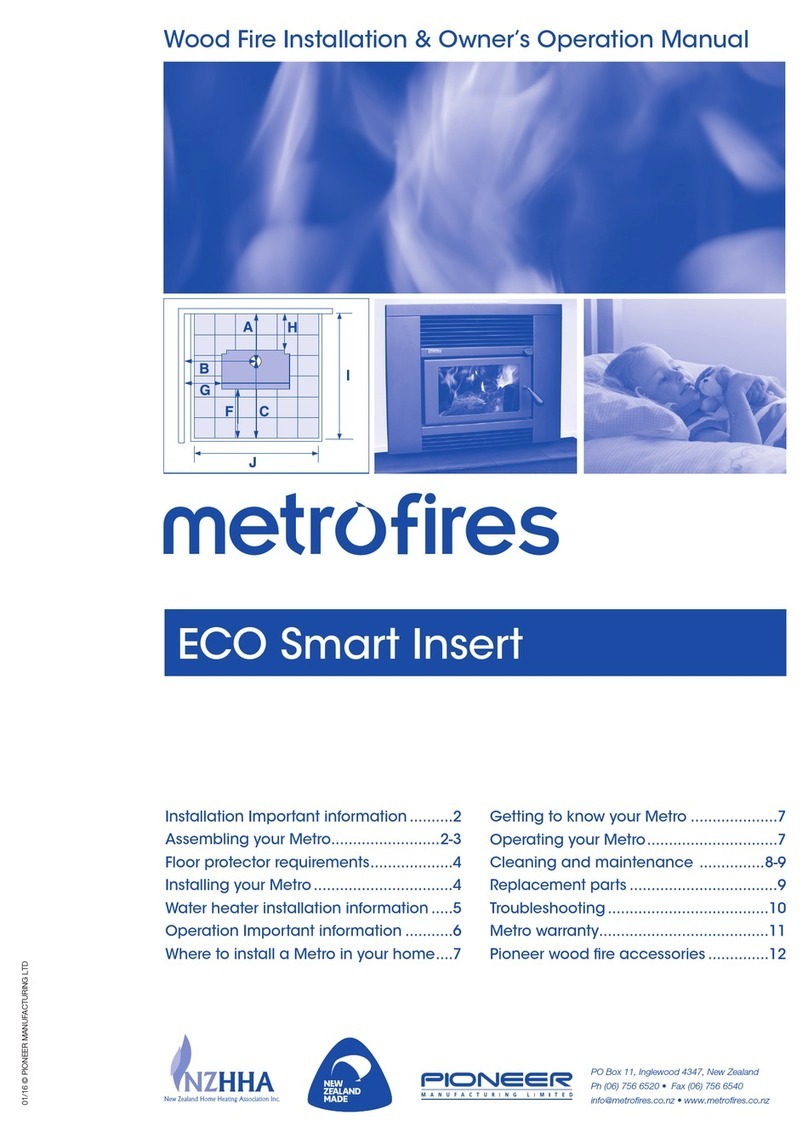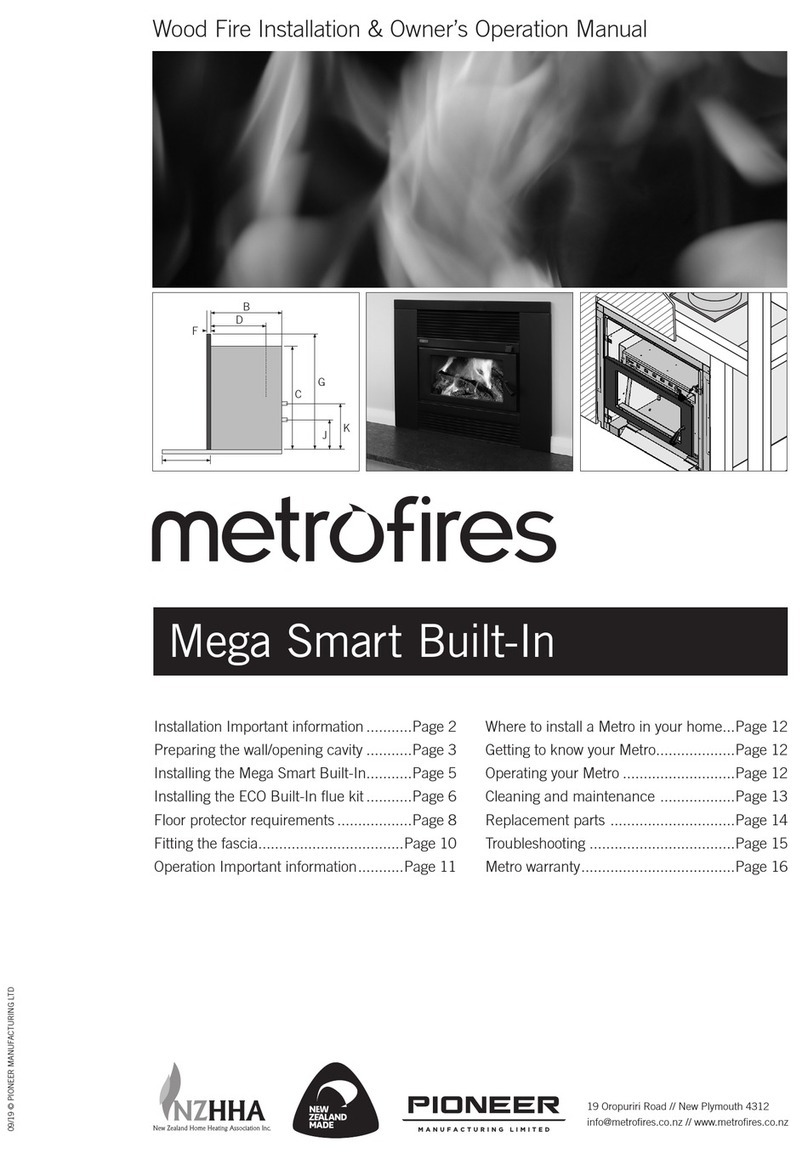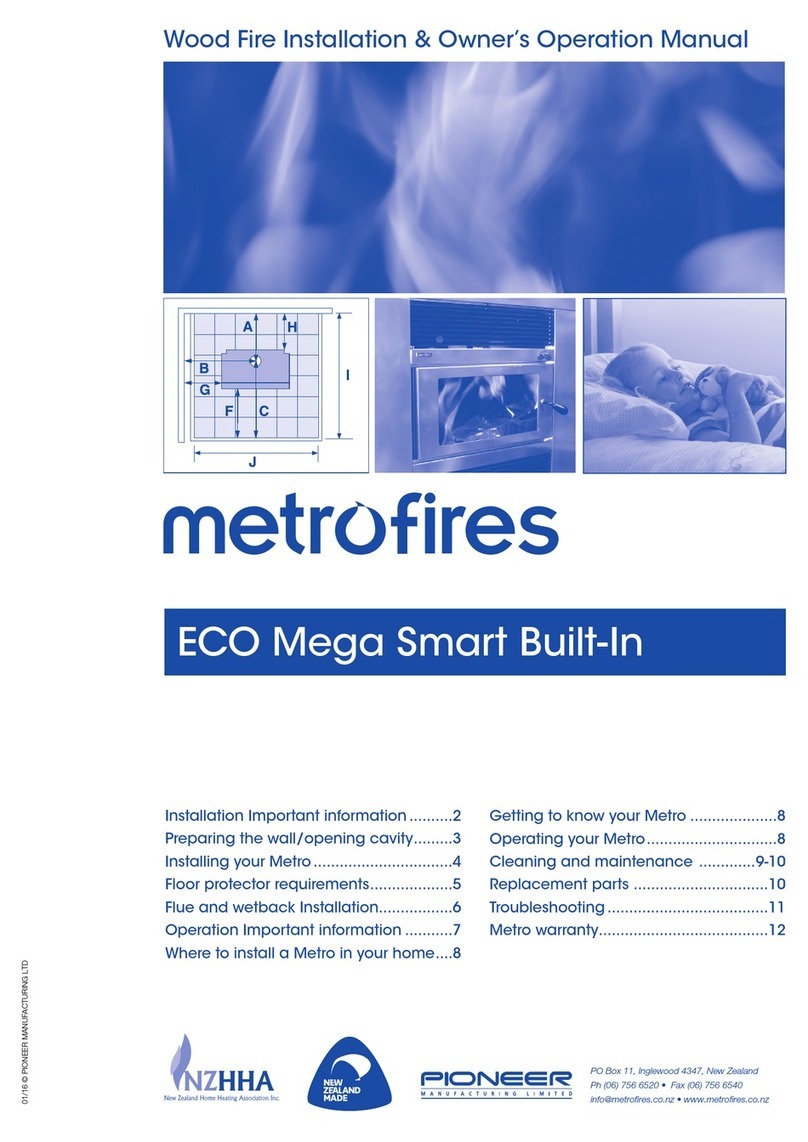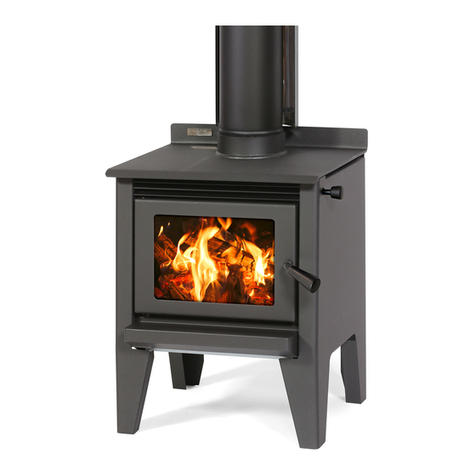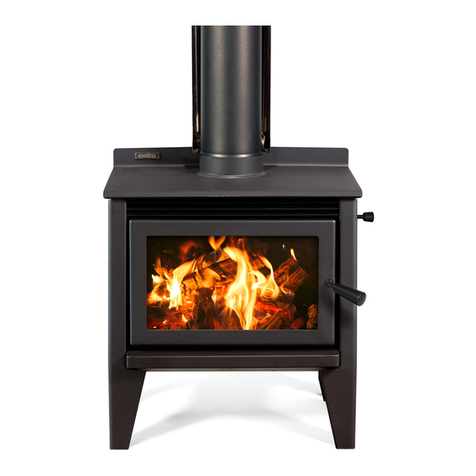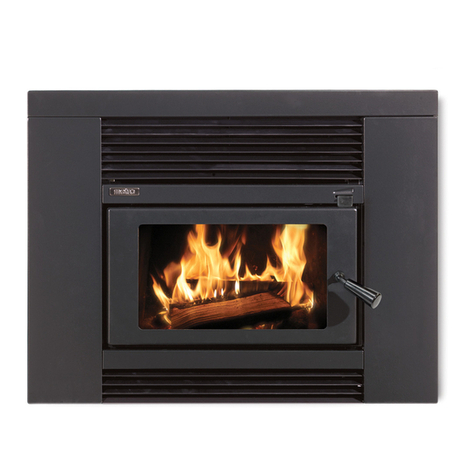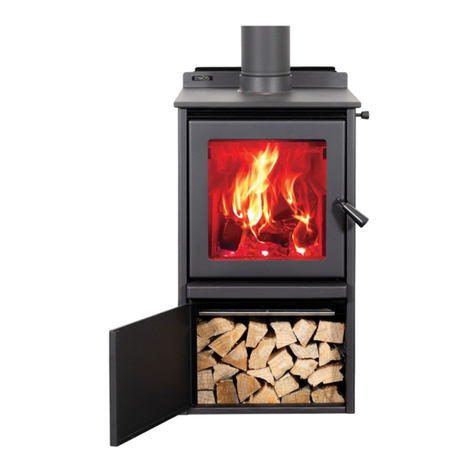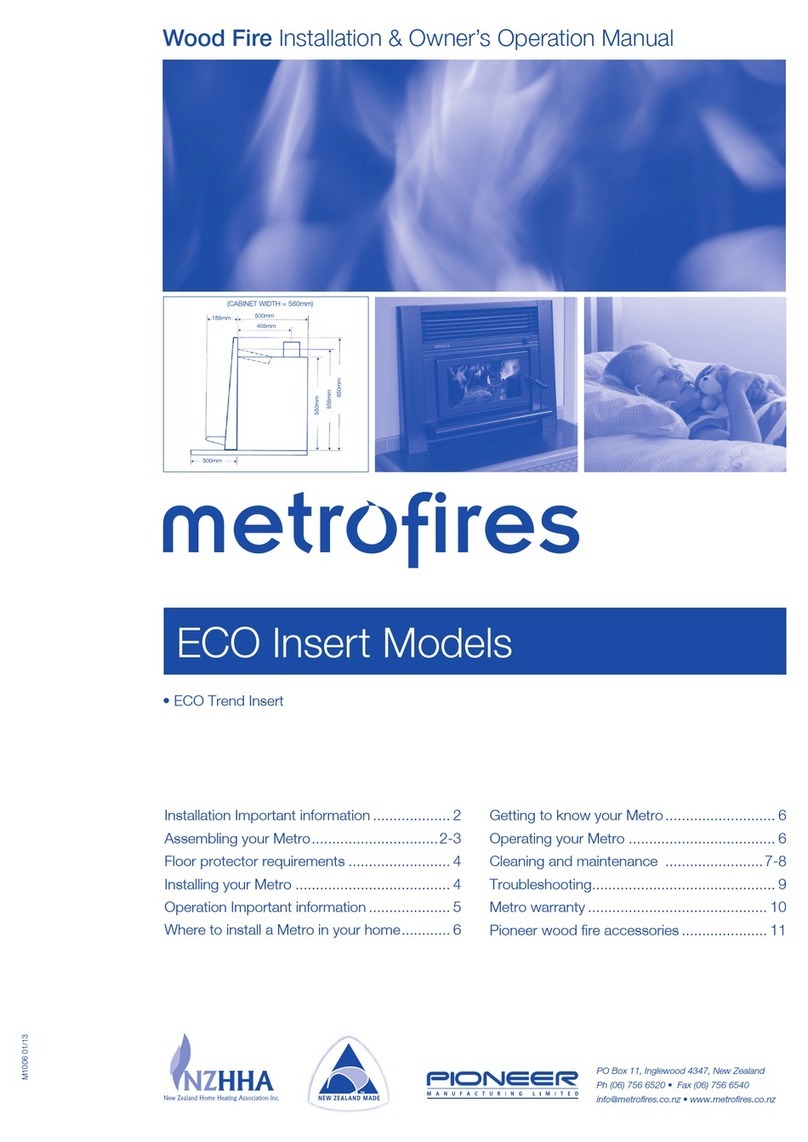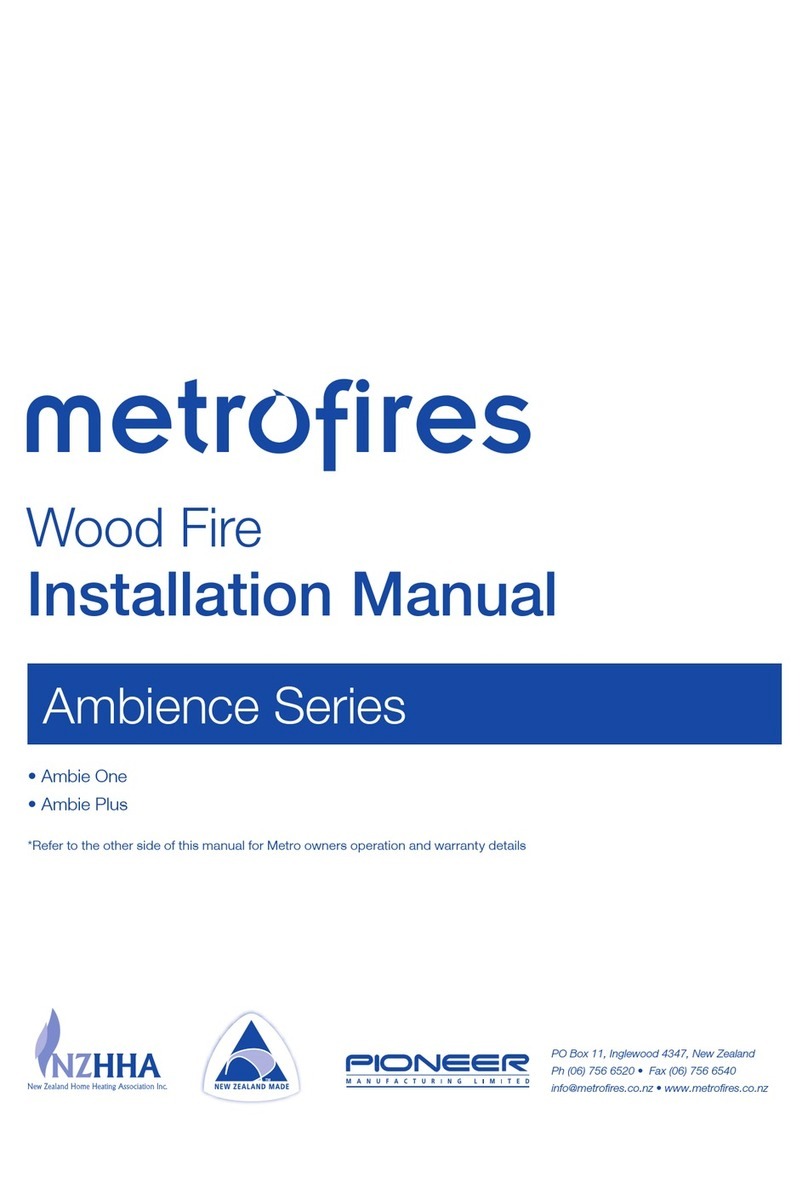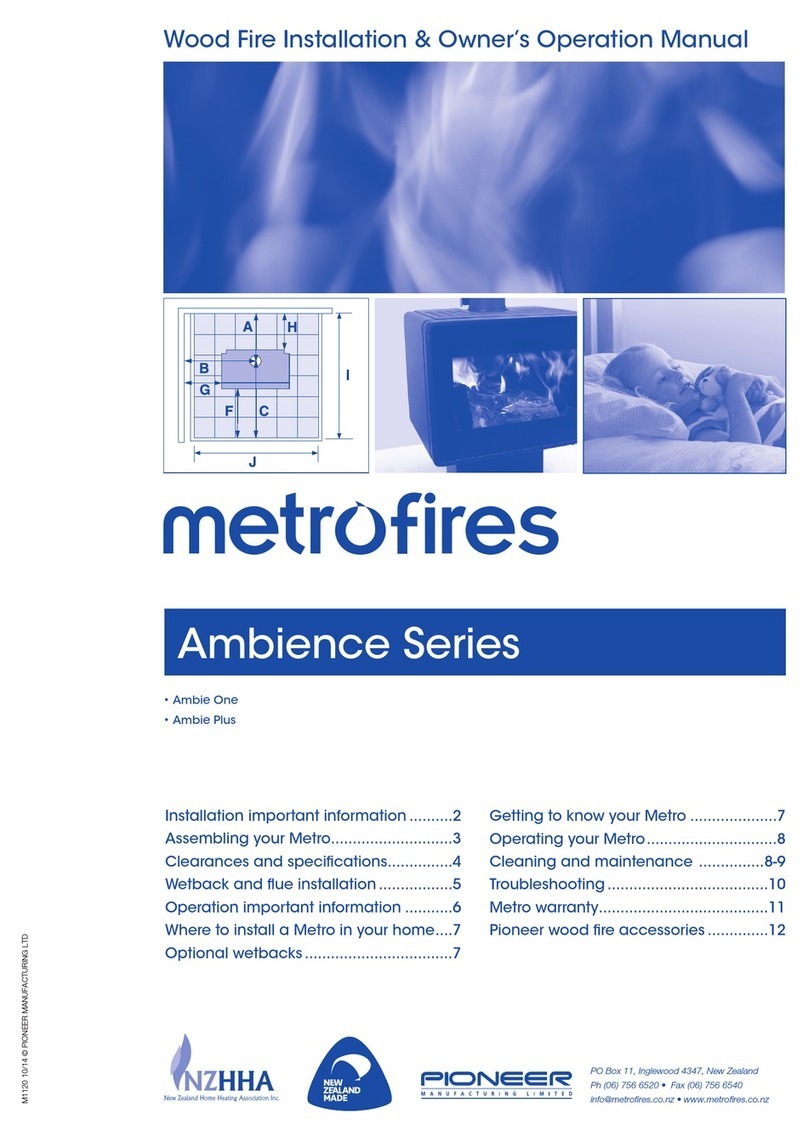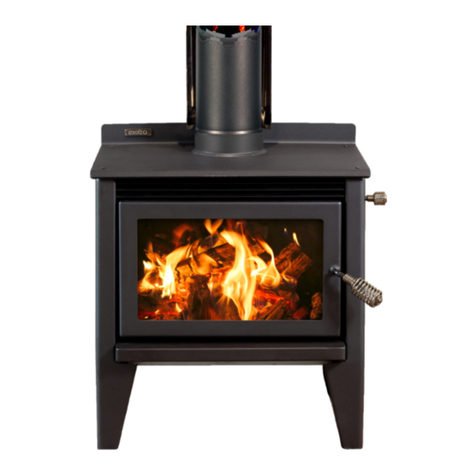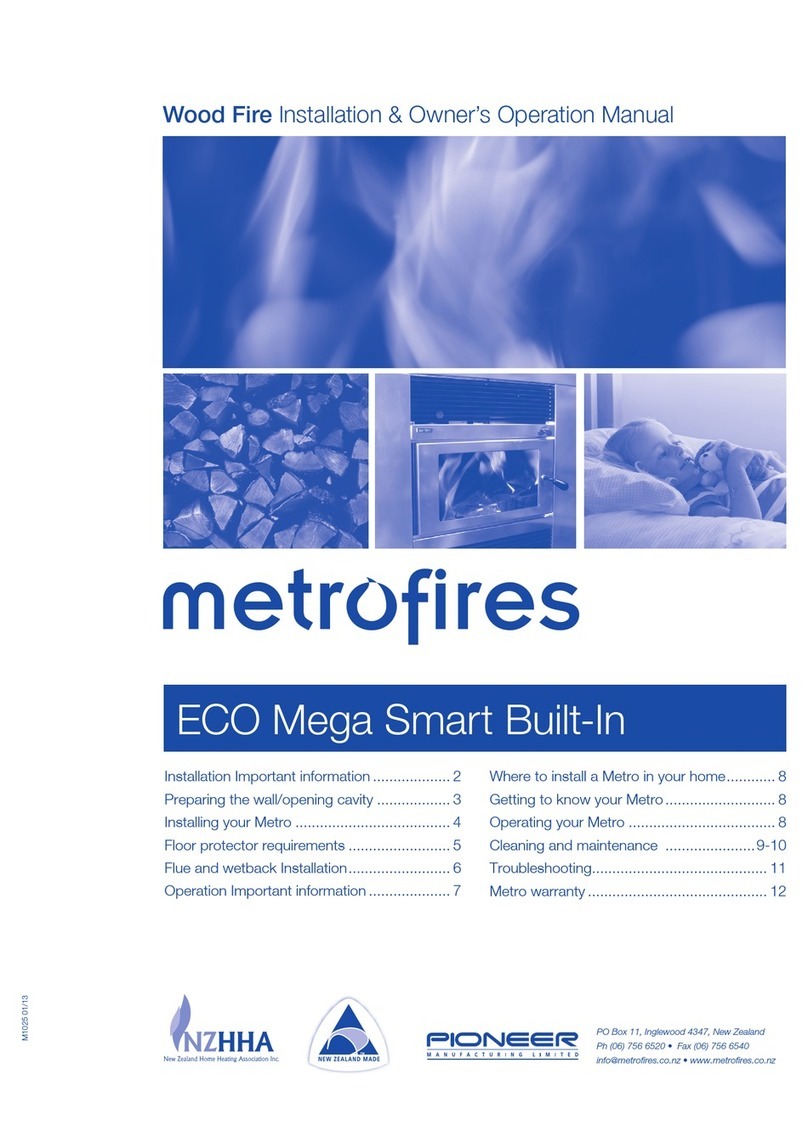
2
Metro insert fires are tested to comply with AS/NZS 2918 incorporating
Appendix ‘E’ when installed in accordance with this manual. Ensure you are
fully conversant with the relevant standard and contents of this manual.
Please take particular note of the following:
• Your Metro should be installed with a Metro ECO flue system which has
been developed to enhance the performance of Metro fires. A minimum
length of 4.1 metres of 150mm diameter is required. Any alternative flue
system must have a minimum flue pipe length of 4.1 metres of 150mm
diameter flue pipe & have been tested to AS/NZS 2918
• All flue joints must be sealed and riveted in three points with stainless
steel or monel rivets; the bottom of the flue in particular MUST be fully
sealed into the flue outlet of the Metro wood fire and secured with the
bolt & nut as supplied in the component kit
• The 150mm flue pipe must be fully encased to the underneath of the
flashing cone, from above the chimney breast (there must not be any
150mm flue pipe exposed)
• Ensure a suitably rated high temperature insulation is placed between
the outer cabinet and the masonry to prevent air from within the room
being drawn into the chimney cavity. Optimum convective heat output is
achieved when the cabinet top is lifted to it’s maximum height and the
firebox cabinet is correctly insulated within the cavity
• In New Zealand, the Metro Insert must be bolted securely to the base of
the chimney cavity to comply with the seismic restraint provisions of
AS/NZS 2918
• The Trend and Smart fascias are available in both vitreous enamel and
metallic black high temperature paint finish. Take care during assembly
and when lifting and fitting the fascia that you do not damage the vitreous
enamel coating. Any surface damage to the paint finish fascias can be
repaired with the use of Pioneer high temperature paint
• DO NOT lift the Insert fascia with your fingers under the louvre’s.
• WE HIGHLY RECOMMEND YOU READ THIS ENTIRE
MANUAL AS INCORRECT OPERATION, MISUSE AND/OR
LACK OF MAINTENANCE WILL VOID THE WARRANTY
• The appliance and flue-system shall be installed in accordance
with AS/NZS2918 and the appropriate requirements of the relevant
building code or codes
• Any modification of the appliance that has not been approved in
writing by the testing authority is considered to be in breach of the
approval granted for compliance with AS/NZS4013 and will void
the warranty
• The appliance must be installed correctly. We recommend a
competent and suitably qualified NZHHA installer
WARNING! Important Information
• Correct installation is critical to the safe operation and performance
of this wood fire.
• Mixing of appliance or flue-system components from different
sources or modifying the dimensional specification or components
may result in hazardous conditions. Where such action is considered,
the manufacturer should be consulted in the first instance
• Do not install a Metro fire if there is any sign of visible damage to
the product
• This appliance must be regularly maintained.
• Use authorised Metro replacement parts only. The use of
unauthorised parts may void the warranty
• This manual MUST be left with the home owner
CAUTION! Important Information
Assembling your Metro fire
All Metro Insert wood fires are packed in two heavy-duty cartons. The Insert
firebox is supplied in a heavy duty palletised carton, this carton is clearly
labelled. The fascia and door are packaged inside a smaller separate
carton. This carton is also clearly labelled to show the colour and coating
finish of the fascia and door. Metro fascia’s are coated in either vitreous
enamel or high temperature paint. Having removed the packaging and
located this manual, familiarise yourself with the diagrams on pages 3 & 4,
and proceed as detailed.
Note: The Metro carton shows the model Metro you are about to install,
enabling you to select the appropriate model’s assembly instructions.
Pre-installation - Firebox cavity
Prior to installing your Metro Insert firebox into a fireplace cavity, it is
important that specified clearances and other requirements are complied
with as follows:
• The chimney must be swept and checked for cracks and general
overall condition. If repairs are necessary, they must be carried out by
a suitably qualified person
• Check the cavity dimensions to ensure the fireplace insert will fit. It is
usually necessary to remove fire bricks from the lower fireplace cavity
• The base of the fireplace cavity on which the Metro fireplace insert will
rest must be level. If it is not, it should be levelled using mortar
• If an ash removal door exists in the base of the fireplace cavity it should
be sealed shut to prevent air entering the cavity
• If a timber or combustible mantel shelf exists above the fireplace Insert
opening, it should be a minimum distance above the top of the Metro’s
fascia. If less than the minimum specified, a heat shield will be required
to be fitted under the mantelshelf using the relevant detail as set out in
AS/NZS 2918. Mantle clearances are detailed on page 5.
ECO Insert Fan (Trend Insert model only)
In all clean air zones, the Metro Trend Insert must be installed with Metro’s
ECO Insert fan which is a single speed, thermostatically controlled device.
This fan must be permanently wired and therefore requires the services of
a registered electrician. Fitting instructions for the fan are supplied with the
fan module.





